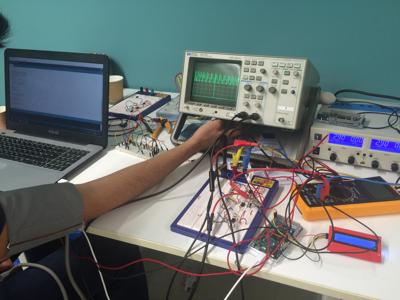Blood pressure, BP is the pressure exerted by circulating blood upon the walls of blood vessel. Systolic pressure is the BP when the heart contacts. Diastolic pressure is the BP when the heart relaxes. Globally, hypertension is a majr chronic , non-comminicable disease and leading cause of death and disability. Its diagnosis and control require accurate blood pressure measurement, which depends upon both the instrument and the technique used. Inaccurate blood pressure measurement might lead to misdiagnosis, and either unnecessary or insufficient treatment, with both ethical and public health implications. The widely accepted ‘gold standard’ measuring device the mercury sphygmomanometer due to envirnmental reason is phased out.
Aneroid sphygmomanometers have replaced many mercury devices, but they have also been shown to be a source of error in blood pressure measurement. The aneroid gauge consists of a metal bellows and movement of the bellows rotates a gear that turns a pointer pivoted on bearings, across a calibrated dial. The adjustment of the mechanical system of the aneroid gauge is more easily disturbed. For this reason, the aneroid gauge must be calibrated against a mercury manometer at regular intervals. Since the blood pressure recorded with the aneroid gauge depends upon the elasticity of the metal bellows, it is subject to errors inherent in the elastic properties of metal such as 'seasoning', hysteresis and drift. According to Dr. Mark Gelfer, Medical Director, VSM MedTech Ltd. in his article, Addressing the Need for Accurate Blood Pressure Measurements, up to 60% of the aneroid devices tested are inaccurate due to improper calibration or maintenance.
Digital sphygmomanometers have largely replaced mercury models in primary care and have equivalent accuracy. Aneroid devices have higher failure rates than other device types. Given the availability of inexpensive and accurate digital models, GPs could consider replacing aneroid devices with digital equivalents, especially for home visiting.

Approved by mentor
Medical tags
- Clinical need
- Monitoring purpose
- Area
- Angiology / vascular medicine
- Technology
- Monitoring device
- Project keywords
- UBORA Design School 2018
- Device classification
- IIa